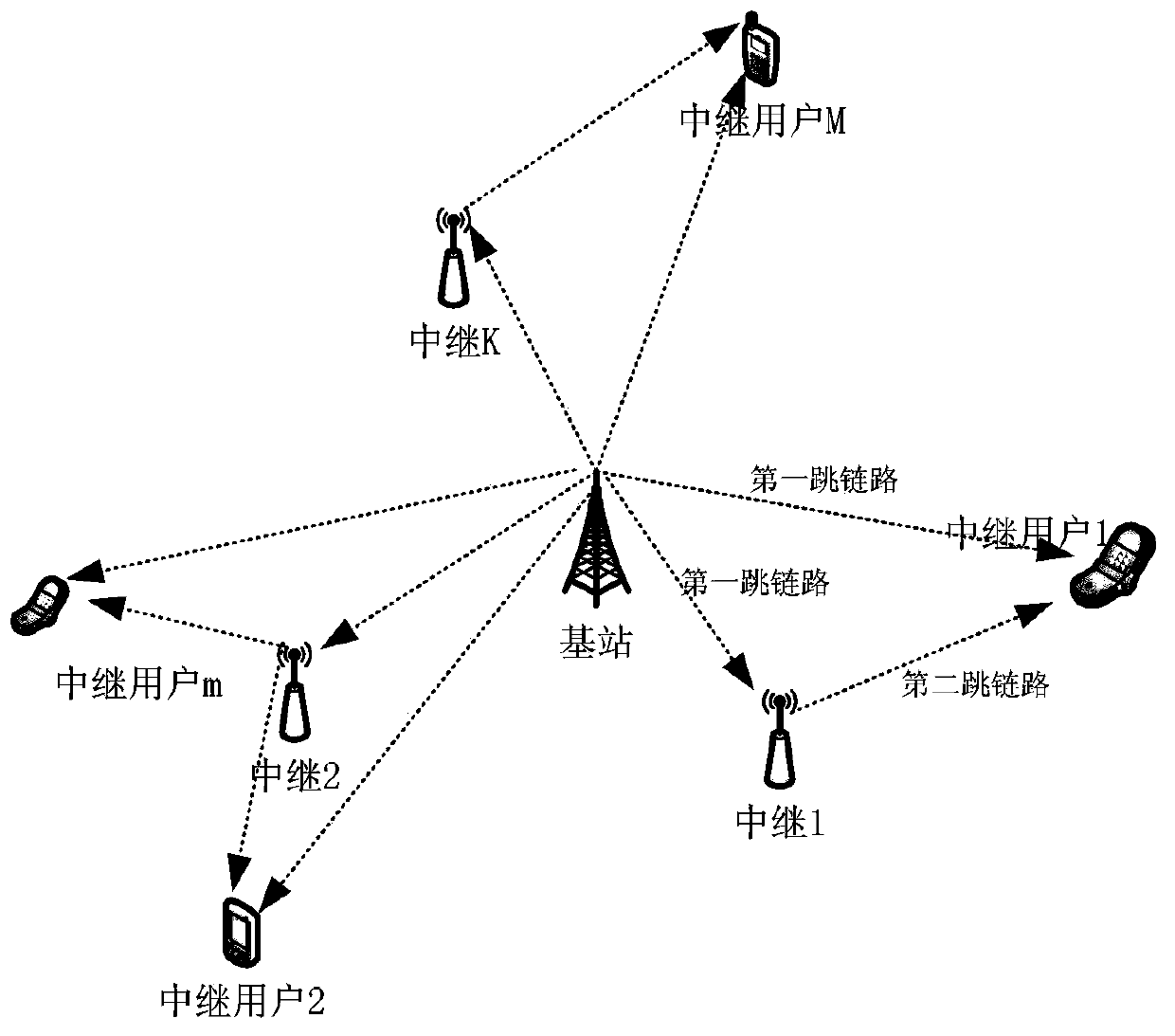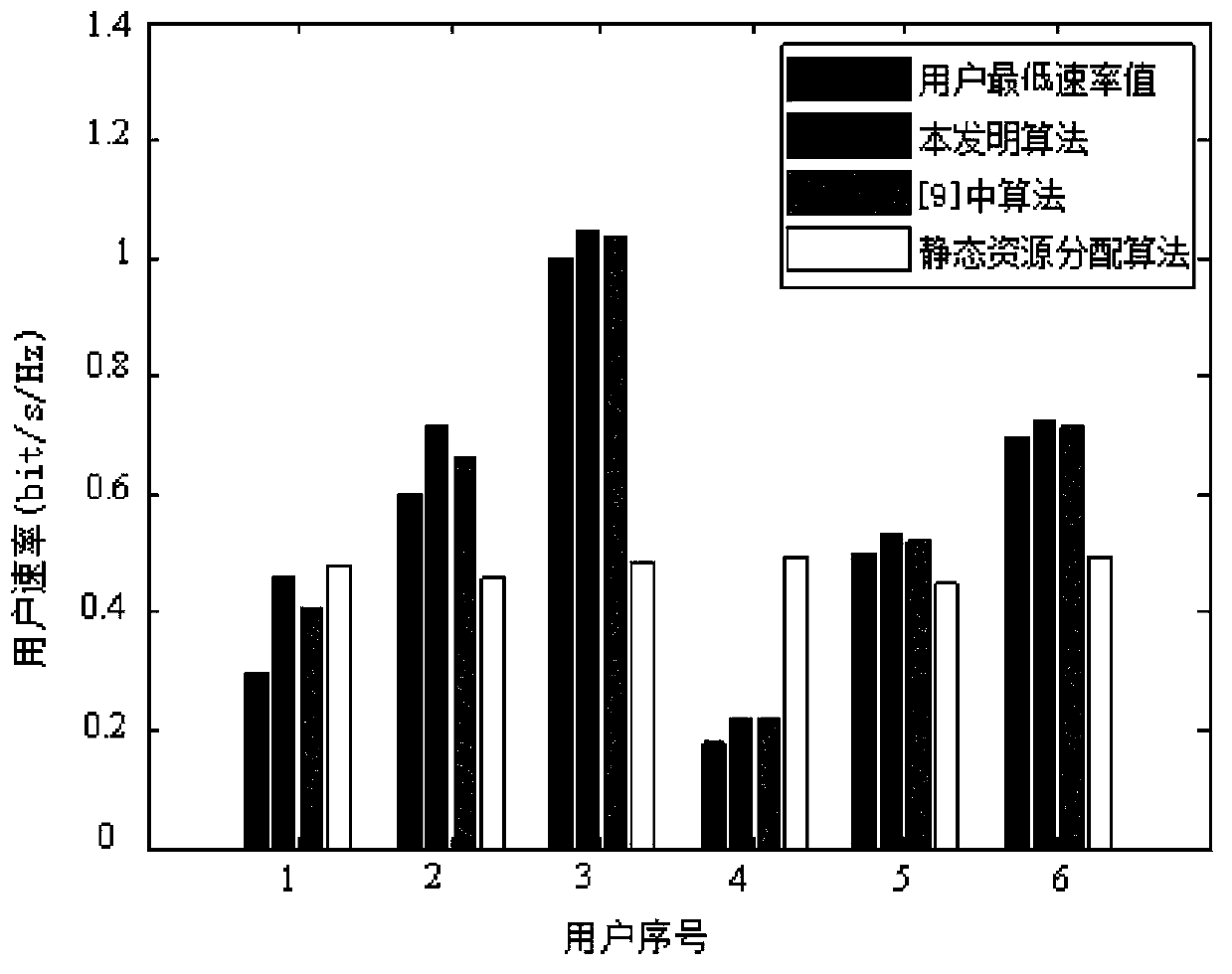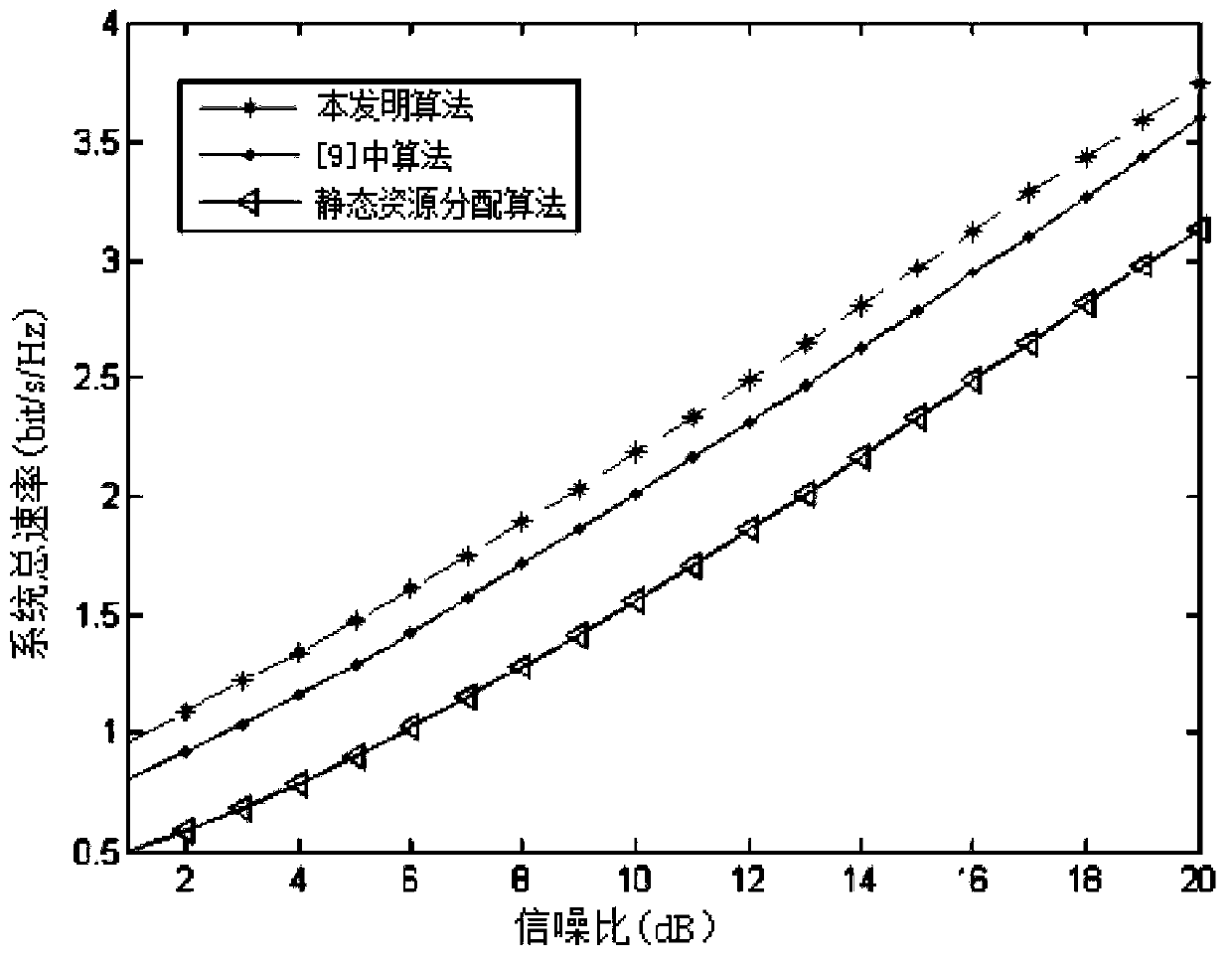Resource allocation method for cooperation relay orthogonal frequency division multiple access system
A technology of orthogonal frequency division multiple access and cooperative relay, which is applied in transmission systems, digital transmission systems, and multiple use of transmission paths, and can solve the problems of low service quality and inability to adapt to the wireless communication environment.
- Summary
- Abstract
- Description
- Claims
- Application Information
AI Technical Summary
Problems solved by technology
Method used
Image
Examples
Embodiment Construction
[0039] The present invention will be further described in detail below in conjunction with the accompanying drawings and embodiments.
[0040] A resource allocation method for a cooperative relay OFDMA access system proposed by the present invention, the multi-cooperative relay single-cell downlink communication system model used in it is as follows figure 1 shown. In order to ensure that each user in the multi-cooperative relay single-cell downlink communication system can receive the signal sent from the base station, a half-duplex cooperative transmission mode is selected. In the first time slot, the base station sends information to the relay and the user; In the second time slot, the relay decodes the received information and forwards it to the user. Assume that there is a base station BS located in the center in a multi-cooperative relay single-cell downlink communication system, and there are K relay stations RS and M users. The available bandwidth of is B, and the ent...
PUM
 Login to View More
Login to View More Abstract
Description
Claims
Application Information
 Login to View More
Login to View More - R&D
- Intellectual Property
- Life Sciences
- Materials
- Tech Scout
- Unparalleled Data Quality
- Higher Quality Content
- 60% Fewer Hallucinations
Browse by: Latest US Patents, China's latest patents, Technical Efficacy Thesaurus, Application Domain, Technology Topic, Popular Technical Reports.
© 2025 PatSnap. All rights reserved.Legal|Privacy policy|Modern Slavery Act Transparency Statement|Sitemap|About US| Contact US: help@patsnap.com



